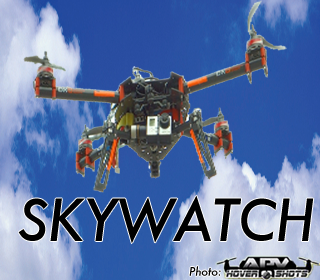
Harry C. Arnold working on a video project. Photo: Jonathan Jackson.
Three big fire trucks have brought out ladders and are spraying water on a burning building from above.
On the ground firefighters and several fire trucks work to put out the flames.
That’s when Harry C. Arnold launches his drone and flies towards the fire, filming the big cloud of grey smoke rising from the building.
He hopes the video can show people that drones are valuable firefighting tools.
Arnold, a Detroit filmmaker and photographer, has flown unmanned aerial vehicles as a hobbyist for ten years. He has used them for filming for three years.
He’s been filming landscapes and different events, but it’s just in the past year he has started to film fires. So far he has filmed eight from the air.
Flying the drone up among the flames and smoke requires use of his long experience. Even though he said that the basic way to film is the same, he feels a rush to gets the drone up above the fire.

This story is part of Great Lakes Echo’s ‘Skywatch’ series (UAV Photo: APV Hovershots)
Arnold maneuvered the drone between electrical wires during the fire in May. Fascinated YouTube watchers asked him if he crashed into them. He did not, but he has had a couple of close calls which taught him a few lessons.
The first thing Arnold does when he arrives at a burning building is to check the direction of the wind, he said. He wants to launch where the wind blows away from him. But as long as he takes precautions, he thinks it’s pretty safe.
“Now I have no hesitations,” he said.
Arnold can quickly set up his small quadcopter, a helicopter with four rotors that costs approximately $1,000 and gives a good combination of stability and reliability, he said.
In a crash, his four-pound drone would do less damage than say a 15-pound octocopter, which has eight rotors.
Arnold started videoing fires the night before last Halloween. After a brutal Devil’s Night in Detroit in 1994, when fires ravaged the city, city officials created Angel’s Night where volunteers patrol neighborhoods to report suspicious activity. In 2012, Arnold volunteered at a Detroit community center to use his drone to patrol the streets.
“That’s when I started working with the firefighters,” Arnold explained. I approached them. I had a drone and showed them the things I was doing. All I had to do was to show them the pictures and they were interested just from that.”
The Detroit Fire Department is excited about Arnold’s work.
“He gives us a vision,” said Dale Bradley, a Detroit fire captain.
He has alerted Arnold about three recent fires, the last one on September 25th when a tanker burned at Interstate 94 in Detroit.

In Detroit Harry C. Arnold hopes his unmanned aerial vehicle can help save lives. Photo: Jonathan Jackson.
The work with Arnold and his drone is very new to the fire department, Bradley said.
The firefighters have used the drone footage for training. Arnold has arrived after the fire and filmed hazardous material sites, and the firefighters use the video to see what they can do better in the future.
The goal is to get Arnold to the scene in time to live stream the drone video to the firefighters’ smart phones. That could help firefighters find out if there is a child in the building or if a floor has collapsed.
“Harry has the capability to go through windows and doors. He can go into the building and do a quick search,” Bradley said.
Arnold also thinks the drones can help. “With time they can save lives,” he said.
To operate a drone themselves the fire department, as a public institution, would need a Certificate of Authorization from the Federal Aviation Administration.
To get permission to fly, the firefighters would have to provide federal officials with the location 60 days in advance. That’s not feasible as no one can predict where the next fire might be.
Getting their own drone is not a priority for the fire department, which needs more firefighters and has many budget problems, Bradley said.
By working under rules that regulate hobbyists and not charging for his fire videos, Arnold said he is not violating federal rules.
But it is a grey area, said Matthew Waite, the director of the drone journalism program at the University of Nebraska.
If they are flying in metro Detroit it’s going to be hard to argue that they’re not flying over houses or people, which would be against the rules for hobbyists, Waite wrote.
Hobbyists cannot fly higher than 400 feet above ground or within three miles of an airport without a special permission. The vehicle must always be in the operator’s sight.
The Federal Aviation Administration is supposed to come up with a set of more extended rules regarding unmanned aerial vehicles in 2015.
That vehicle can cost from $60,000 to $120,000. Another drone promoted as a firefighter tool is the $50,000 Qube by AeroVironment.
There has been “a ton of interest” for the Scout both from U.S. and foreign fire departments, Barter said. He declined comment on whether fire departments have bought the drone, but he said that the company has customers in law enforcement and that some of those customers work with fires.
Datron’s customers are mainly the U.S. and foreign military, he said.
So far the federal rules prohibiting flying drones over highly populated areas have made the fire departments in the big metropolitan areas reluctant to buying into the drone technology, Barter said.
